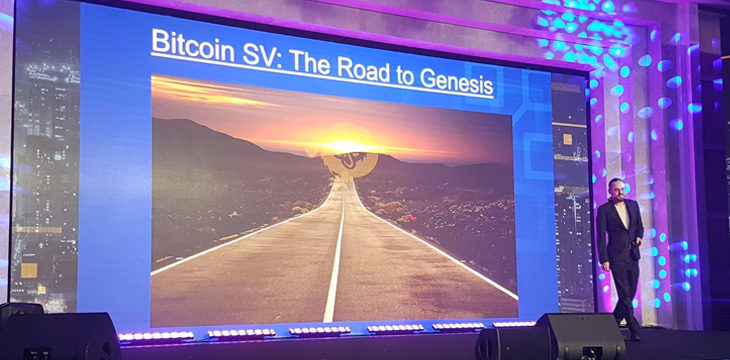
|
Getting your Trinity Audio player ready... |
The first day of CoinGeek Seoul was dedicated to Bitcoin’s technical power, and there was a lot of talk about how Bitcoin is coming more powerful on its road to Genesis. Several developers from nChain, led by Technical Director Steve Shadders, took the stage to explain exactly what they’re doing to bring Bitcoin SV (BSV) back into alignment with Satoshi’s original vision, and allow it to scale the blockchain to an unlimited degree.
Shadders began the discussion by giving a bit of a history on Bitcoin, describing how it was held back needlessly by Bitcoin Core developers. But now that it’s following its original vision once again as BSV and being allowed to scale, it’s showing very healthy growth, with constantly increasing transaction counts, block sizes, and usage, all positive indicators that its going in the right direction.
He then teased a few big changes coming when BSV returns to its genesis. OP_RETURN, which was limited for so long, will soon have the ability to have multiple OP_RETURNs in the same transaction. Big numbers is coming to BSV, allowing it to have cryptography in script for the first time. It will also expand beyond the current three scripting options to have many more.
One point he explained at length was the deprecation of Pay-to-script-hash (P2SH), which is being done for both technical and philosophical reasons. It’s being made up for by the introducing of accumulator multisig, and dove deep into the code of how that will work.

The goal of all this is to increase the security of zero confirmation transactions, or zero conf. Building confidence in zero conf is important to scaling, Shadders explained, because it builds confidence that bigger things can be done without a potential lack of security or funds.
Shadders then introduced Daniel Connolly, Lead Developer of the Bitcoin SV node project, to explain to the crowd what Terranode is. “Terranode is bitcoin server software that has been rebuilt from the ground up for enterprise and scale,” he explained simply.
What it hopes to accomplish is 50,000 transactions per second, with big blocks and big transactions. It will do this with better messaging, allowing for large data and streaming data support. It will also have more efficient data stores, keeping only what’s necessary to keep the blockchain going.
Terranode already exists in an experimental stage, working on both the Mainnet and Scaling Test Network (STN). He also noted that a P2P system is currently in development.
Next, John Murphy was welcomed to the stage. He is the Lead Developer of the Nakasendo SDK team.
What is Nakasendo? If you’ve been following Dr. Craig Wright’s writings, you’ll already be familiar with the concept. It allows for public shared secrets or functions, without individual members giving up any privacy involuntarily. “You don’t have a single private key, the private key has been split into multiple shares and these can be distributed across multiple parties or players,” he said.
Murphy conducted a live demonstration of working Nakasendo code for the audience, demonstrating that the tools to allow board members to make decisions for their enterprises on the blockchain is already within reach.
Finally, Dr. Alex Mackay, a researcher at nChain, took the stage in the afternoon to talk about how simplified payment verification (SPV) can be introduced in a low bandwidth process to increase merchant adoption.

To spread crypto adoption, Mackay noted, crypto payments have to get closer to how fiat payments work, and specifically, how we traditionally pay for items at a check-out counter. The customer needs to be able to spend BSV without being online, putting the burden on the merchant to broadcast the transaction.
To do this, a low bandwidth SPV system is the solution. Customers will have wallets which can be offline the majority of the time, with only the ability to pay for transactions with contained block headers UTXOs, Input Txs and Merkle paths. Merchants, on the other hand, will have systems which can be branched throughout a location with a central hub, receiving those payments and broadcasting them to the blockchain.
It’s a system that may not be too far away from reality, as it’s been built to work with BIP270.
The folks at nChain hope that these new pieces of infrastructure will help BSV towards its goal of scaling, and every single element discussed by the team at CoinGeek Seoul does that in one way or another. Faster transactions, bigger blocks, and more possibilities are being promised to the users and enterprises who chose BSV.

 11-22-2024
11-22-2024


